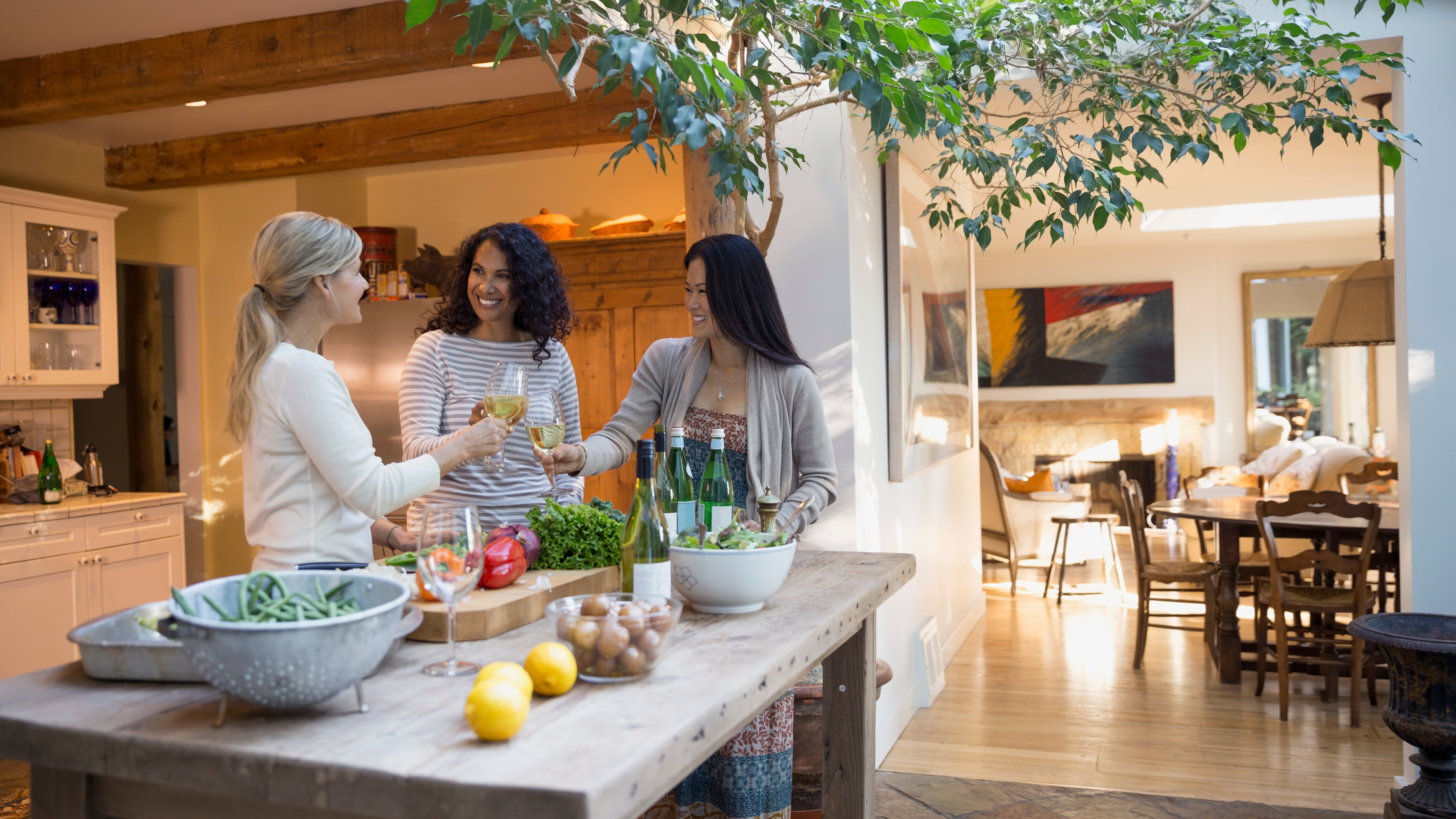The Rich Are Worried Their Open Kitchens Are Too Messy So They're Adding Second Kitchens
Watch enough HGTV remodeling shows and you could be convinced there is not a person on earth who doesn't value an open floor plan. Those shows seem to spend about 40 percent of each episode knocking down walls to create giant, open expanses. "Oh this dividing wall? It's got to go," hosts practically sneer. It reflects Americans' current preference for wall-less, multipurpose rooms in which a kitchen flows into a dining room which flows into a great room which flows into an indoor-outdoor patio space. But as this wonderfully comprehensive piece in The Atlantic notes, there's a consequence of these wide-open homes: guests can see everything.
Some well-off folks are concerned about company seeing, heaven forbid, the results of their kitchen work now so visible thanks to open kitchens and the lack of dedicated dining rooms. Friends sitting on kitchen-island barstools—because who has dining-room sets these days?—might catch a glimpse of your dirty mixing bowl, your deveined shrimp, your discarded potato skins. As a result, some home designers have introduced the idea of a "messy kitchen," a pantry-kitchen hybrid room behind your open kitchen where you do the actual meal prep, leaving your show kitchen pristine for guests' inspection.
As The Atlantic piece notes, a company called Schumacher Homes includes this option in some of its designs; a 3,718 square feet "public kitchen" houses the usual appliances, while behind it, a second kitchen hides a refrigerator, pantry, cabinets, second sink, and dishwasher from view. I don't know about you guys, but I'm getting all sorts of Downton Abbey vibes.
What's excellent about The Atlantic piece is how author Ian Bogost traces the history of American kitchen-living space designs back to the turn of the 20th century, examining in particular Frank Lloyd Wright's contributions to this area. Kitchens and living spaces are never just about a place to make food and then a separate place to enjoy it. They reflect our society's gender norms and ideas about the division of labor, leisure, and child-rearing: "Already, by the 1950s, the open-plan kitchen offered a connection to living and dining spaces for the purposes of home monitoring and management. Gender roles being what they were, that tended to mean that women were 'allowed' to oversee their children's and husbands' needs in the living spaces while also preparing or cleaning up from family meals."
For home-design fanatics, architecture nerds, and just those seeking to rebel against open-floor-plan tyranny, give "The Curse Of The Open Floor Plan" a read here.
